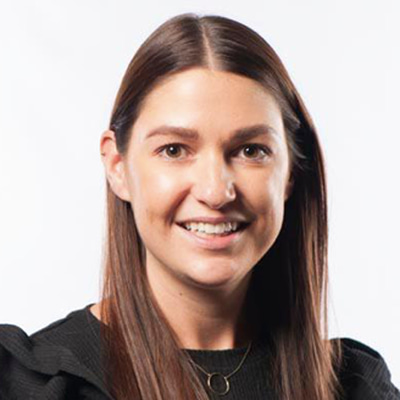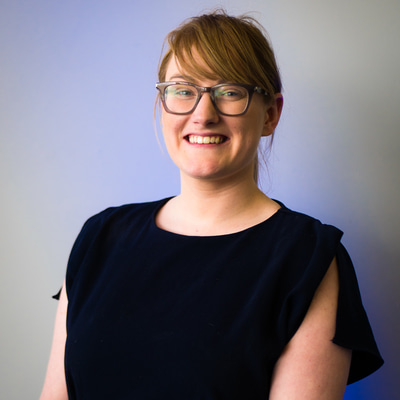- OT
- Industry
- Contact lenses
- The first steps
Contact lens guide
The first steps
OT speaks with optometrists about the routes patients take into contact lenses and how this journey can be made more efficient for both the patient and the practice

07 December 2023
A patient’s route into contact lenses can begin in a range of ways, from a lifestyle conversation in the consulting room, during a natter with a member of the practice team as they browse for new spectacles, to a question when booking an appointment.

When it comes to starting the conversation about contact lenses with prospective new wearers, for optometrist and ophthalmic director of Specsavers Northallerton, Rebecca Troughton, it is important to ask open questions in order to “get the conversation flowing.”
“I normally ask patients if there is a time where they wish they didn’t wear their glasses. Or, if someone has previously trialled lenses unsuccessfully, I explore what went wrong," she told OT.
“Developments in lens technologies and comfort mean many of the previous or perceived issues no longer apply,” she said.
Troughton highlighted that considering potential motivating factors for contact lens wear is key to a personalised journey.
In the consulting room, clinical lead optometrist at Lynne Fernandes Optometrists, Rebecca Donnelly, places emphasis on simply asking a patient if they wear contact lenses.
“Even if the patient has been to your practice their whole life for their eye examinations, they could still be wearing lenses fitted elsewhere or buying them online,” Donnelly emphasised.
“At the end of the consultation, I make my spectacle recommendations and eye care recommendations. I will also tell the patient just so they are aware that their prescription is suitable for contact lenses if they ever wanted to try them,” Donnelly added.
For both practitioners, raising awareness of contact lenses as an option with patients is something that is fed through the entire practice team.
“We have a television screen that we put promotional material on as well as information about the practice and team,” Donnelly shared.
More than half of patients were not offered an eye examination and contact lens appointment for the same day1
Troughton observed: “Our whole team is passionate and involved in championing lenses from the first ‘hello’ through to the consulting room.”
She explained: “Contact lens updates are shared each morning in a huddle, and every eye examination concludes with a personalised recommendation for vision correction, including suitability for contact lenses and the offer of a trial.”
In February this year, CooperVision launched its Fresh Thinking campaign, a long-term initiative that is designed to support growth in the contact lens category by identifying research-led efficiencies in the patient journey.
Findings shared as part of the campaign, for which CooperVision surveyed over 500 eye care professionals (ECPs), have highlighted that for around 30% of respondents, contact lens patients make three or more additional non-chair time visits to a practice, on average, to complete a soft contact lens fit.2
I will utilise remote consultation for follow up where I feel it is appropriate so as not to bring the patient in unnecessarily
To complement ECP-led research, CooperVision surveyed patients about their expectations and found that over half of potential contact lens wearers have an expectation that they will be able to take contact lenses away with them at their appointment.3
So how do practitioners ensure that expectations are managed and the patient has access to contact lenses in an efficient yet safe way?
Informing and streamlining
When it comes to meeting patient expectations, preparation is key for Troughton, Donnelly and their practice teams.
“Preparation is crucial,” shared Troughton, explaining that her practice will always have a fully stocked trial bank and her team will always perform a comprehensive pre-trial assessment, meaning no patient journey to the practice is wasted.

Similarly for Donnelly, it is important that the practice has the appropriate lenses ready for the fit.
“It just adds another appointment for the patient if you don’t and uses more time in the diary,” she highlighted.
A helping hand
Once a trial is underway, Troughton acknowledged that some patients may experience hurdles in the initial stages of contact lens wear, but by ensuring the practice team is available to support patients across a range of channels, this can be navigated together.
“Being accessible to patients how they want and when they want is key,” Troughton explained.
Donnelly emphasised that if a patient has to wait a few weeks to see an ECP, they will drop out.
“I will utilise remote consultation for follow up where I feel it is appropriate so as not to bring the patient in unnecessarily, especially for patients who are existing lens wearers to the practice and we have changed prescription/lens modality.”
Ultimately, presented with all of the information, it is the patient who makes the decision to trial contact lenses or not.
Being accessible to patients how they want and when they want is key
However, this does not mean the patient will not be apprehensive or nervous about the unknown.
As part of its Fresh Thinking research, CooperVision found that 84% of patients did not feel confident on the day of their first contact lens appointment.4
When it comes to ensuring the patients feel supported into the trial and beyond, Troughton said online resources are invaluable.
“There is a wealth of material on our website. Like any new skill, there is a lot to take in initially,” she shared.
Donnelly and her practice team ultilise videos on lens handling, application and removal, as well as hard copy instructions and a handout of the dos and don’ts of contact lens handling and hygiene.
“We all learn differently so we need to cover all bases,” Donnelly shared with OT.
Fresh Thinking in a nutshell
CooperVision’s Samantha Watson summarises the contact lens manufacturer’s three-phased campaign
CooperVision's Fresh Thinking campaign aims to help the optical industry uncover and address barriers to contact lens category growth that may be associated with the existing contact lens patient journey. The campaign has three phases.
Phase one, which was launched at 100% Optical 2023, saw CooperVision capture the thoughts and ideas of ECPs.
Phase two was about fresh ideas. CooperVision listened to the optical industry, gaining insights through a roundtable discussion with ECPs, and gathering the thoughts and feelings of current and potential contact lens wearers.
Phase three will be delivered at 100% Optical 2024, where CooperVision will bring the campaign to life.
Learnings will be shared to facilitate the delivery of key principles along with discourses, tools and support in order to help optimise the contact lens patient journey.
CooperVision will be working in partnership with Aston University on a PhD that will assess the safety and patient satisfaction of the contact lens fitting journey.
References
- CVI data on file Verve Consumer Fresh Thinking Survey September 2023 New contact lens wearers <12 months N=250 (n=115) 54% were not offered an eye examination and contact lens appointment for the same day
- CVI data on file 2023. CooperVision Fresh Thinking Eye Care Professional Survey, n= 532. Optical practice staff's view on the amount of non-chair time visits, for a new contact lens wearer
- CVI data on file Verve Consumer Fresh Thinking Survey September 2023 Patients considering wearing contact lenses N=250 (n=137) To what extent do you expect to take contact lenses away with you on the day of your first contact lens appointment? 'fully expect it' or 'expect it' was selected by 54%
- CVI data on file Verve Consumer Fresh Thinking Survey September 2023 New contact lens wearers <12 months N=250 (n=210) Patient's experience of trialling contact lenses



Comments (0)
You must be logged in to join the discussion. Log in